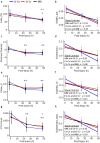Burn resuscitation strategy influences the gut microbiota-liver axis in swine
- PMID: 32973266
- PMCID: PMC7515893
- DOI: 10.1038/s41598-020-72511-8
Burn resuscitation strategy influences the gut microbiota-liver axis in swine
Abstract
Fluid resuscitation improves clinical outcomes of burn patients; however, its execution in resource-poor environments may have to be amended with limited-volume strategies. Liver dysfunction is common in burn patients and gut dysbiosis is an understudied aspect of burn sequelae. Here, the swine gut microbiota and liver transcripts were investigated to determine the impact of standard-of-care modified Brooke (MB), limited-volume colloid (LV-Co), and limited-volume crystalloid (LV-Cr) resuscitation on the gut microbiota, and to evaluate its' potential relationship with liver dysfunction. Independent of resuscitation strategy, bacterial diversity was reduced 24 h post-injury, and remained perturbed at 48 h. Changes in community structure were most pronounced with LV-Co, and correlated with biomarkers of hepatocellular damage. Hierarchical clustering revealed a group of samples that was suggestive of dysbiosis, and LV-Co increased the risk of association with this group. Compared with MB, LV-Co and LV-Cr significantly altered cellular stress and ATP pathways, and gene expression of these perturbed pathways was correlated with major dysbiosis-associated bacteria. Taken together, LV-Co resuscitation exacerbated the loss of bacterial diversity and increased the risk of dysbiosis. Moreover, we present evidence of a linkage between liver (dys)function and the gut microbiota in the acute setting of burn injury.
Conflict of interest statement
The authors declare no competing interests.
Figures





Similar articles
-
Effect of Intravenous Fluid Volumes on the Adrenal Glucocorticoid Response After Burn Injury in Swine.J Burn Care Res. 2018 Aug 17;39(5):652-660. doi: 10.1093/jbcr/iry024. J Burn Care Res. 2018. PMID: 29757442
-
Gut microbiota trajectory in patients with severe burn: A time series study.J Crit Care. 2017 Dec;42:310-316. doi: 10.1016/j.jcrc.2017.08.020. Epub 2017 Aug 12. J Crit Care. 2017. PMID: 28822895
-
Remodeling gut microbiota by Clostridium butyricum (C.butyricum) attenuates intestinal injury in burned mice.Burns. 2020 Sep;46(6):1373-1380. doi: 10.1016/j.burns.2020.01.007. Epub 2020 Jan 31. Burns. 2020. PMID: 32014349
-
Dysbiosis and liver diseases (Review).Int J Mol Med. 2021 Sep;48(3):183. doi: 10.3892/ijmm.2021.5016. Epub 2021 Jul 30. Int J Mol Med. 2021. PMID: 34328191 Review.
-
Gut Microbial Changes and their Contribution to Post-Burn Pathology.Shock. 2021 Sep 1;56(3):329-344. doi: 10.1097/SHK.0000000000001736. Shock. 2021. PMID: 33481548 Free PMC article. Review.
Cited by
-
Histone deacetylase inhibitor attenuates intestinal mucosal injury in fatally scalded rats.Ann Transl Med. 2022 Jan;10(2):54. doi: 10.21037/atm-21-5766. Ann Transl Med. 2022. PMID: 35282042 Free PMC article.
-
Prolyl hydroxylase domain inhibitor is an effective pre-hospital pharmaceutical intervention for trauma and hemorrhagic shock.Sci Rep. 2024 Feb 16;14(1):3874. doi: 10.1038/s41598-024-53945-w. Sci Rep. 2024. PMID: 38365865 Free PMC article.
-
Characteristics of the Gut Microbiome and Its Relationship With Peripheral CD4+ T Cell Subpopulations and Cytokines in Rheumatoid Arthritis.Front Microbiol. 2022 Feb 3;13:799602. doi: 10.3389/fmicb.2022.799602. eCollection 2022. Front Microbiol. 2022. PMID: 35185845 Free PMC article.
-
Unlocking the role of wound microbiome in diabetic, burn, and germ-free wound repair treated by natural and synthetic scaffolds.Acta Pharm Sin B. 2025 Jan;15(1):611-626. doi: 10.1016/j.apsb.2024.08.024. Epub 2024 Sep 1. Acta Pharm Sin B. 2025. PMID: 40041888 Free PMC article.
-
Lung Protection After Severe Thermal Burns With Adenosine, Lidocaine, and Magnesium (ALM) Resuscitation and Importance of Shams in a Rat Model.J Burn Care Res. 2024 Jan 5;45(1):216-226. doi: 10.1093/jbcr/irad127. J Burn Care Res. 2024. PMID: 37602979 Free PMC article.
References
Publication types
MeSH terms
Grants and funding
LinkOut - more resources
Full Text Sources
Medical
Miscellaneous

